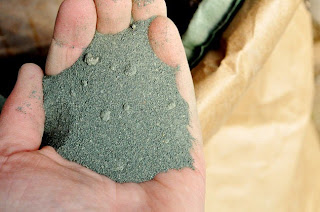Types of molding sand:
Green sand:
Natural
sand with moisture
Dry sand:
Not
suitable for large castings
Facing sand:
This sand
is used directly next to the surface of the pattern and comes into contact with
the molten metal when the mould is poured.
As a
result, it is subjected to the severest conditions and must possess, therefore,
high strength and refractoriness. This sand also provides a smoother casting
surface and should be of fine texture. It is made of silica sand and clay, and
some additives without the addition of used sand.
Facing sand is always used to make dry sand
moulds while system sand is frequently used for green sand molding.
Parting sand:
This sand is used to prevent adhering of two halves
of mould surfaces in each molding box when they are separated. Thus, to ensure
good parting, the mould surface (at contact of cope and Drag) should be treated
with parting sand or some other parting material.
It is also sprinkled or applied on the pattern
surface (before the molding sand is put over it) to avoid its sticking and
permit its easy withdrawal from the mould. The parting sand is fine dry sand.
Backing or floor or black sand:
This is the sand which is used to back up the facing
sand and to fill the whole volume of the flask. Old, repeatedly used molding
sand is mainly employed for this purpose.
Core sand:
The core sand mainly consists of silica sand and an
organic binder, with very little, if any, clay content. The presence of clay in
core sand reduces its permeability and collapsibility. The core sand may
contain small percentages of other constituents also, to enhance its
properties.
Loam sand:
50
% of clay and dried hard and using for large castings






I was reading about moulding sands from PC Sharma... got confused.... searched the web...visited this website....and came to know....this itself is a copy from that book, PC Sharma ��
ReplyDeletegood information, thanks for sharing...
ReplyDeleteM Sand Price in Chennai
Blue Metal Suppliers in Chennai